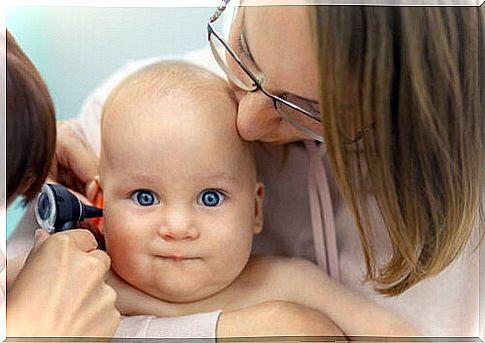4 Rare Diseases That Can Occur In Children – Being Parents

We all hear about rare diseases in children from time to time in the media, but what are they really? How do they happen? What are some of them? The answer to all these doubts can be somewhat complex, but in the following lines you will find basic information about these pathologies.
Most of them appear from birth and can be due to genetic factors or pregnancy problems. Treatment is often quite complex, which reduces the quality of life for children and their families. Fortunately, there are many associations around the world that seek to give visibility and support to these cases.
Congenital or acquired diseases?
To understand what rare diseases are and how they occur in children, it is important to understand the difference between congenital and acquired problems.
The former are present from birth, although they have not been diagnosed at this stage, while the latter are the consequence of a triggering factor at any stage of life. As you will see, rare diseases are usually congenital.
Often they are the consequence of genetic problems, as occurs in mutations or inheritance of defective genes, but they are also influenced by the use of substances during pregnancy (drugs, drugs or tobacco) and of course , by unknown factors.
4 rare diseases in the little ones
Below we will comment on some of the conditions most representative of this group. Many of them are associated with malformations or other health problems, so it is common for the treatment to require a multidisciplinary approach, that is, the participation of several specialists.
1. Cystic fibrosis

According to a publication by the Spanish Pediatric Association, cystic fibrosis has an incidence of 1 in 1,000 to 8,000 live births, making it one of the most common rare diseases. It is produced by genetic defects and is capable of causing considerable quality of life problems.
Clinically, it affects several organs, including the lungs and the gastrointestinal system. It is characterized by poor management of secretions (such as mucus), which promotes the development of infections caused by microorganisms that generally do not respond very well to conventional treatments.
2. Moebius syndrome, one of the rare diseases in children
This rare disease is characterized by neurological problems. The nerves responsible for “activating” facial muscles and facilitating certain eye movements are not functional, so children have considerable facial paralysis which may initially go undiagnosed at birth.
There are also other associated health issues, such as birth defects, swallowing defects (i.e. swallowing food), and even poor development of some teeth, such as molars.
3. Gilles de la Tourette syndrome
This disease is more common in boys than in girls and its symptoms appear during any stage of childhood and generally decrease in intensity until adulthood. The main symptom is the appearance of frequent tics that affect different parts of the body: blinking of the eyes, movements of the hands or even coughing.
According to a Mayo Clinic publication, this rare disease can be complicated by certain neuropsychiatric disorders. Among them are obsessive-compulsive disorder (OCD) or autism spectrum disorder (ASD). So far there is no cure, although doctors usually prescribe antipsychotic drugs to control the disease.

4. Dandy-Walker syndrome
The human brain contains a substance called cerebrospinal fluid (CSF), which passes through several structures. Dandy-Walker syndrome is a congenital problem characterized by malformations of these structures, for which the free flow of CSF is compromised.
One of the most direct consequences of this problem is the pathological enlargement of the heads of babies, a condition called congenital hydrocephalus. So far there is no cure and treatment is based on neurosurgery, medication and mental therapy, especially in children with cognitive problems or mental retardation.
The importance of knowing about rare diseases
While it is highly unlikely to meet a child with these conditions, the truth is that there are thousands of family stories that one has to live day-to-day with this diagnosis. It is not at all easy, not only because of the prognosis and treatment difficulties, but also because of the associated social stigma.
The knowledge of these diseases by the general population helps to generate awareness about a problem that is ignored, but no less important.
There are hundreds of organizations (many of which are run by parents) that are dedicated to providing help to these patients and a great way to help is to spend time learning about these conditions.









